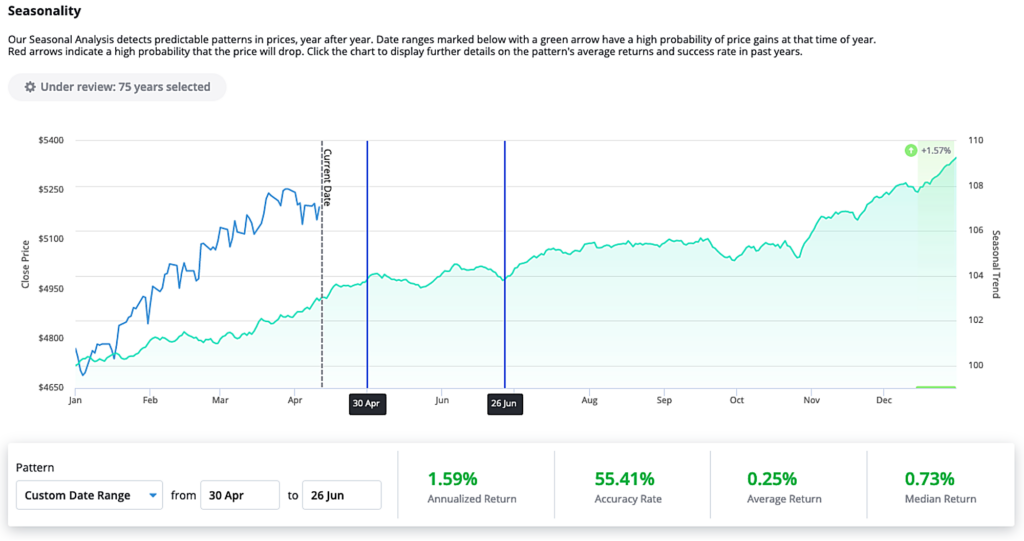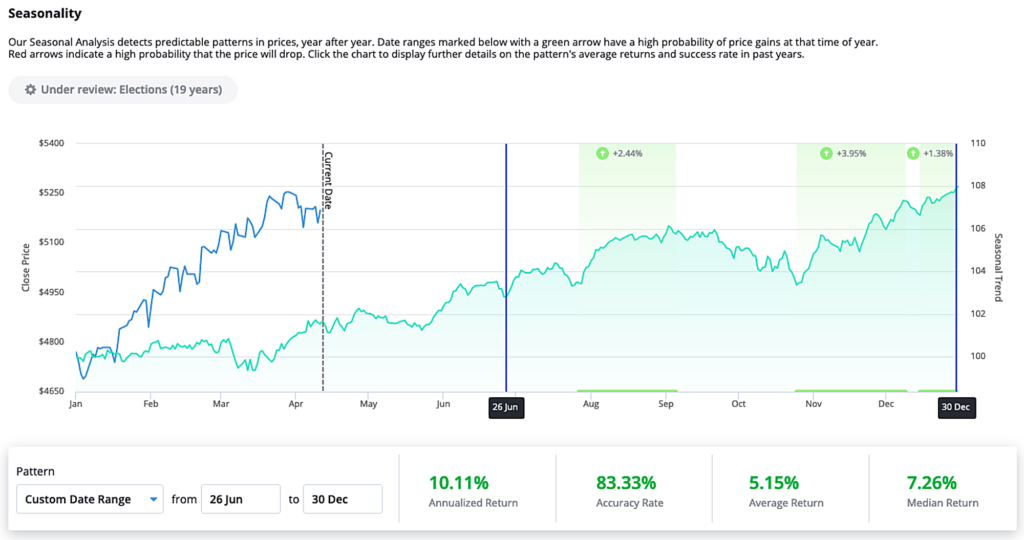Biden’s Most Inflationary Policy
|
Listen to this post
|
Joe Biden’s loan forgiveness campaign continues… War drums beat ever louder… “Sell in May” season may have come early… Protect yourself with defensive stocks and quick trades in the Age of Chaos…
By Michael Salvatore, Editor, TradeSmith Daily
Canceling student loans will probably wind up as the most inflationary policy of Biden’s presidency… full stop.
It will assure a longer, more painful inflation fight and terminally higher education costs for everyone… in exchange for the short-term benefit of a relative few.
Here’s why…
Loan creation is money creation. We know this because, as we discussed last Friday, it’s how the Federal Reserve adds money to the system.
By buying bonds, the Fed lends money to the counterparty — the federal government and the banks who stash the created money in reserves. When the bond matures, the money comes back to the Fed with interest.
Student loans are different and rely on some greater assumptions.
When an 18-year-old freshman in college is granted their first student loan, the lender is essentially buying a bond from that student with what’s assumed to be a guaranteed return, with interest… but no fixed maturity date.
Another difference is the money that’s created from this bond doesn’t usually wind up with the student. It goes to the university. The idea is that the student will use their education — or some other means, the lender doesn’t really care — to go out and earn the money and pay it back. Another assumption.
President Biden has been busy breaking these assumptions, though. He’s thus far forgiven $153 billion in student loans for about 4 million Americans, with $3.6 billion in forgiveness recently announced.
Here’s the thing though. When you forgive a loan, the debt’s monetary value is partially or completely destroyed — for the lender.
Meanwhile the intangible value the debtors received — their education — is not. All the money that was borrowed (created) to spend on education went to the university. The lender never got the money back. But the university got paid… and the student got their education… so all’s good, right?
Not so. The money that was created when the debt was issued is still in the system, but the value that was derived from that money has been eroded significantly.
From this whole exercise, universities learn the lesson that they can keep charging higher and higher tuition fees — inflationary. Students learn the lesson that they shouldn’t pay back their debts because the government’s got their back — more bad behavior leading to more potential inflation. And lenders — which happen to be the federal government in many cases — turn what should’ve been a return into a deficit.
Higher deficits, higher prices, and poor financial education all in one fell swoop.
This is just one more sign to expect inflation to stick around longer than we’d all like. How to defend yourself? The plan is simple and evergreen:
- Buy high-quality, dividend paying stocks — and use TradeSmith’s tools to find them. (See Saturday’s dispatch from TradeSmith CEO Keith Kaplan for a great example of how.)
- Buy physical, hold-in-your-hand gold. 10 gold bars bought you a house 50 years ago, and they can buy you a similar house today. There has been no better long-term safeguard against inflation, save for…
- Bitcoin. Bitcoin’s disinflationary monetary policy makes it an essential part of an all-weather portfolio. Focus on the long term, not the daily swings up and down.
This is far from the only threat to your wealth lurking about right now, though…
- The beat of war drums grows ever louder…
And traders are going risk-off in response.
On Friday, headlines splashed across screens everywhere suggesting an imminent retaliation attack from Iran on Israel, after a missile strike on a diplomatic compound in Syria killed 13 people two weeks ago.
Seemingly in reaction, stocks had the worst day in months — with the S&P 500 down 1.65% as I write and getting worse by the second.
It’s been a true “flight to safety” day, with commodities like crude oil, precious metals like gold and silver, and the U.S. dollar holding up while equities tank.
The 10-year Treasury yield, which as we’ve pointed out has been charging higher lately, sank more than 2% as traders sought safety in long-term U.S. debt.
Are we finally getting that correction we warned about a few weeks back? It could well be. We are entering a historically flat, if not outright rough period for stock prices.
The phrase “Sell in May and go away” exists for a reason. The Trade CyclesSeasonality indicator shows that over the last 75 years, the S&P 500 returns a mere 0.25% on average from the end of April through the end of June — with a few dips in between.

Though notably, the last two weeks of April, beginning today, tend to see a 0.95% average return with a 66.2% accuracy rating.
Should Middle East tensions escalate (by the time you read this, they may already have), it’s impossible to know whether stocks will follow this historical model. But if you’re worried that we’re about to enter a free-fall zone, I urge you to look to the right of the chart.
Even if we do see an early summertime slump, we should keep in mind that the final few months of the year tend to bring a strong tailwind to stocks. And this year, being an election year, the effect is even more pronounced.

During the past 19 election years, the S&P 500 historically returned an average of 5.15% from the end of June through the end of the year.
That tells me that whatever doldrums are coming our way, they’re a buying opportunity. Both for the three defensive sectors I mentioned earlier, and for the juicy growth stocks that tend to rise the highest when the tide comes back in.
For more on this idea, make sure to tune into TradeSmith Daily later this week. I’ll share a conversation I recently had with contributing editor Lucas Downey, highlighting some great ideas for both periods…
- Everything we’ve discussed today proves how important it is to “expect the unexpected”…
Louis Navellier, senior investment analyst at our corporate partner, InvestorPlace, has said we’re entering an Age of Chaos in the years to come.
With surging inflation… government policies egging it on… worsening conflicts overseas that the U.S. is increasingly entangled in… and an endless “will they, won’t they” debate on the direction of decades of high interest rates… it’s hard to argue with.
But so few market participants are prepared for such a time. The 13 years of low volatility and low inflation between the Great Financial Crisis and the 2021 pandemic bubble trained investors to “buy the dip” so long as the Fed was in their corner with easy monetary policy.
Today, things have changed completely. Inflation is high alongside volatility… and interest rates have fewer reasons to come down than ever.
To your health and wealth,
Michael Salvatore
Editor, TradeSmith Daily